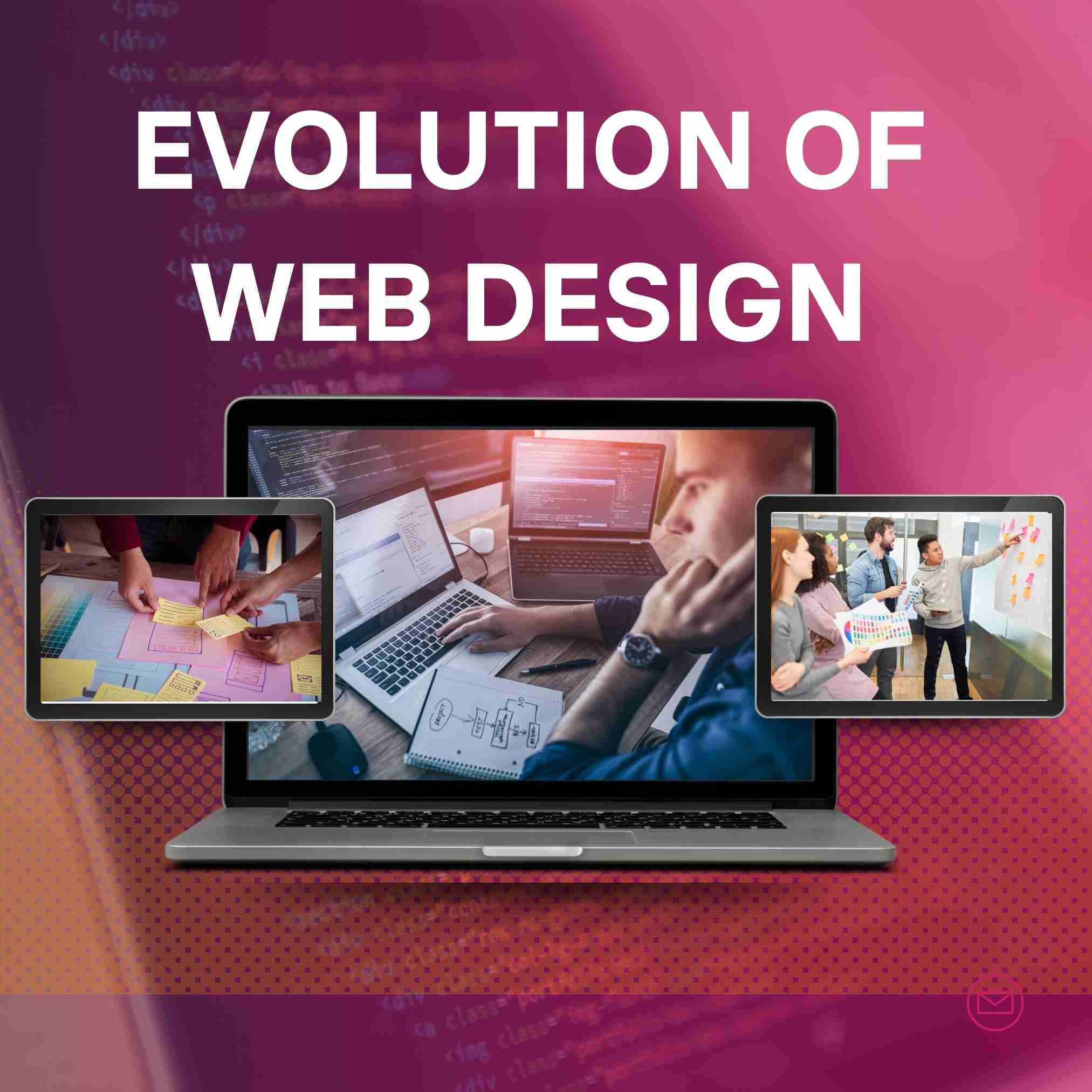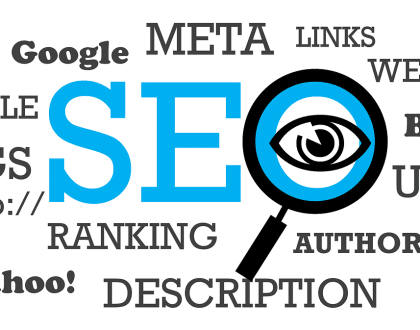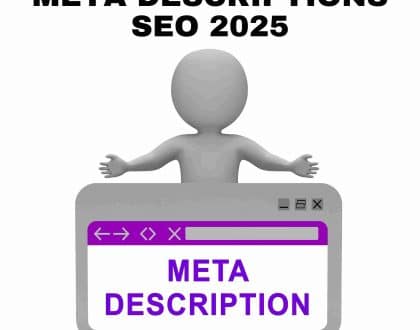Evolution of Web Design: A Journey Through Time

Evolution of Web Design – The World Wide Web has undergone a remarkable transformation since its inception in the early 1990s. What started as a basic system for sharing text documents has evolved into a sophisticated, dynamic platform that shapes and reflects our digital experiences. One of the key driving forces behind this evolution is the field of web design. In this comprehensive exploration, we will delve into the fascinating journey of how web design has changed over the years, tracing its development from the static, text-heavy pages of the past to the immersive, interactive experiences of the present.
Evolution of Web Design: A Journey Through Time
A. The Birth of the Web: The Early Years (1990s)
1. Static and Text-Heavy Pages
- The journey of web design begins with the birth of the World Wide Web itself. In the early 1990s, websites were basic and primarily focused on conveying information through static, text-heavy pages. The design was rudimentary, with minimal graphics and limited styling options. HTML (Hypertext Markup Language) was the primary language used for creating these early websites, and designers had limited tools at their disposal.
2. Introduction of HTML Tables and Frames
- As the web gained popularity, designers sought ways to structure content more effectively. HTML tables and frames were introduced in the mid-1990s, allowing designers to organize content into rows and columns. This marked a significant step forward in terms of layout possibilities, but the designs remained relatively simple compared to modern standards.
3. The Rise of Flash Animation
- In the late 1990s, Adobe Flash emerged as a popular tool for adding animation and interactivity to websites. Designers embraced Flash for its ability to create dynamic and engaging content. Flash-based websites featured animated intros, interactive menus, and multimedia elements. However, this era also brought challenges such as longer loading times and accessibility issues.
B. The Dot-Com Boom: Web Design in the Late 1990s
1. Proliferation of Color and Graphics
- The late 1990s witnessed the dot-com boom, an era marked by a surge in internet-based businesses. This period had a profound impact on web design, as companies sought to differentiate themselves through visually striking websites. Vibrant colors, bold graphics, and unconventional layouts became increasingly prevalent, reflecting the exuberance of the time.
2. Introduction of CSS for Styling
- In 1996, the World Wide Web Consortium (W3C) introduced Cascading Style Sheets (CSS), providing designers with a powerful tool for controlling the visual presentation of web pages. CSS allowed for the separation of content and presentation, enabling more flexible and consistent styling across websites. This was a pivotal moment in the evolution of web design, laying the foundation for modern design practices.
C. The New Millennium: Web Design in the 2000s
1. Web 2.0 and the Rise of User-Centric Design
- The early 2000s saw the emergence of Web 2.0, a concept that emphasized user-generated content, collaboration, and a shift toward more interactive and dynamic websites. Designers began prioritizing user experience, leading to the adoption of user-centric design principles. Websites featured cleaner layouts, intuitive navigation, and increased interactivity.
2. Responsive Web Design
- With the proliferation of devices with varying screen sizes, the need for responsive web design became evident. Ethan Marcotte introduced the concept of responsive web design in a seminal article in 2010. This approach advocated for designing websites that could adapt seamlessly to different devices and screen sizes. The use of flexible grids and media queries became standard practices, ensuring a consistent user experience across desktops, tablets, and smartphones.
3. The Dominance of Content Management Systems (CMS)
- The 2000s witnessed the rise of content management systems like WordPress, Joomla, and Drupal, making it easier for individuals and businesses to create and manage websites. These platforms offered templates and themes that allowed users to customize the look and feel of their sites without extensive coding knowledge. This democratization of web design contributed to a diverse online landscape.
D. The Mobile Revolution: Web Design in the Smartphone Era
1. Mobile-First Design
- The advent of smartphones revolutionized the way people accessed the internet. As mobile usage surged, designers began prioritizing mobile-first design principles. Websites were designed with small screens in mind, and responsive design became even more critical. Mobile-friendly navigation, touch-friendly interfaces, and streamlined content layouts became standard practices to accommodate the growing mobile user base.
2. Touchscreen Interactions and Gestures
- With the rise of touchscreen devices, web designers had to adapt to new forms of user interaction. Design elements such as swipe gestures, pinch-to-zoom, and tap interactions became integral to creating intuitive and user-friendly experiences. The focus shifted from mouse-centric interactions to touch-based navigation.
E. The Era of Modern Web Design: 2010s Onward
1. Flat Design and Material Design
- In the early 2010s, design trends shifted towards minimalism with the rise of flat design. Characterized by clean lines, simple shapes, and a focus on usability, flat design aimed to create straightforward and visually appealing interfaces. Around the same time, Google introduced Material Design, a design language that combined the principles of flat design with tactile and realistic elements. Both flat design and Material Design have left a lasting impact on the visual aesthetics of modern websites and applications.
2. Scrolling and Long-Form Content
- The prevalence of mobile devices and the popularity of social media platforms contributed to the rise of scrolling as a primary navigation method. Designers embraced the concept of long-form content, allowing users to scroll through a continuous stream of information. This approach provided a more engaging and immersive storytelling experience.
3. Parallax Scrolling and Microinteractions
- Parallax scrolling, a technique that creates a 3D effect by moving background elements at different speeds, gained popularity as a way to add depth and visual interest to websites. Additionally, microinteractions subtle, functional animations and feedback mechanisms became essential for enhancing user engagement. These design elements added layers of sophistication to the overall user experience.
4. Typography Takes Center Stage
- The importance of typography in web design reached new heights in the 2010s. Designers began to experiment with diverse fonts, sizes, and spacing to create visually appealing and readable text. Custom fonts became more accessible, thanks to web font services like Google Fonts and Typekit. Typography played a crucial role in establishing brand identity and conveying information effectively.
5. Advancements in Web Technologies: HTML5, CSS3, and JavaScript Frameworks
- The continuous evolution of web technologies played a pivotal role in shaping modern web design. HTML5 introduced new structural elements, making it easier to create semantic and accessible web pages. CSS3 brought about advanced styling options, including gradients, shadows, and transitions. JavaScript frameworks such as Angular, React, and Vue.js empowered designers to create dynamic, single-page applications, further blurring the lines between traditional websites and web applications.
6. Dark Mode and Accessibility
- As awareness of accessibility best practices grew, designers began to prioritize creating inclusive experiences for users of all abilities. Dark mode, initially introduced as a feature to reduce eye strain in low-light conditions, became a popular design choice. This trend not only addressed usability concerns but also added a level of personalization to the user experience.
F. The Present and Future of Web Design
1. Augmented Reality (AR) and Virtual Reality (VR)
- The integration of augmented reality (AR) and virtual reality (VR) technologies is poised to redefine the way we interact with the web. Designers are exploring innovative ways to incorporate AR and VR elements into websites, providing users with immersive and interactive experiences. This shift opens up new possibilities for storytelling, product demonstrations, and virtual tours.
2. Artificial Intelligence (AI) in Design
- Artificial intelligence is increasingly influencing web design through tools that automate repetitive tasks, analyze user behavior, and provide personalized experiences. AI-powered chatbots, for example, enhance user engagement by offering real-time assistance. Designers are also utilizing AI to analyze data and make data-driven decisions to optimize user experiences.
3. Web Design for Voice Interfaces
- With the growing prevalence of voice-activated devices and virtual assistants, web designers are adapting to accommodate voice interfaces. This involves rethinking navigation, content structure, and user interactions to ensure a seamless experience for users interacting with websites through voice commands.
4. Blockchain for Web Security and Trust
- As concerns about online security and privacy continue to escalate, the integration of blockchain technology in web design is gaining traction. Blockchain offers decentralized and secure solutions for data storage, identity verification, and transactions, fostering a greater sense of trust and transparency in the digital realm.
Conclusion: Evolution of Web Design
The evolution of web design is a captivating journey that mirrors the rapid advancements in technology and the changing landscape of user expectations. From the static, text-centric pages of the early 1990s to the dynamic, immersive experiences of today, web design has continually adapted to embrace new technologies, design philosophies, and user preferences.
As we stand on the cusp of a new era with emerging technologies like augmented reality, artificial intelligence, and blockchain, the future of web design holds exciting possibilities. Designers will continue to push boundaries, seeking innovative ways to create user-centric, accessible, and visually stunning digital experiences. The only constant in the world of web design is change, and as we look ahead, the journey promises to be as exhilarating as the one that has brought us to this point in the ever-evolving realm of the World Wide Web.
Recommended Posts

Local SEO vs. Global SEO: A Comprehensive Guide
May 14, 2025



